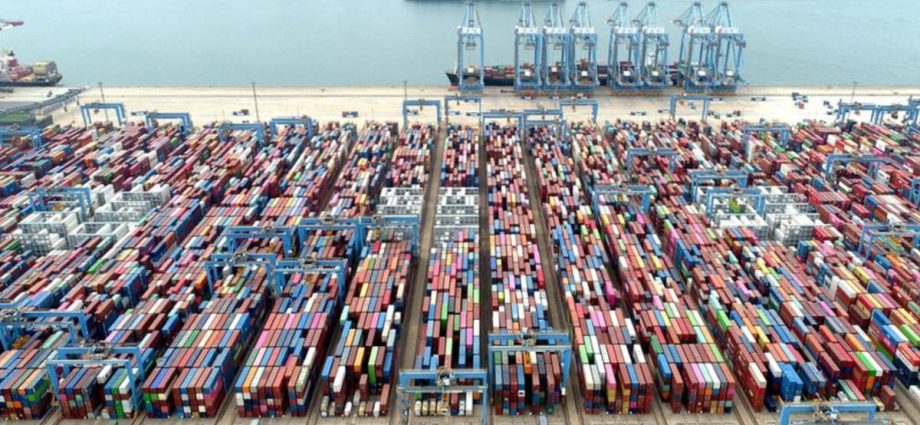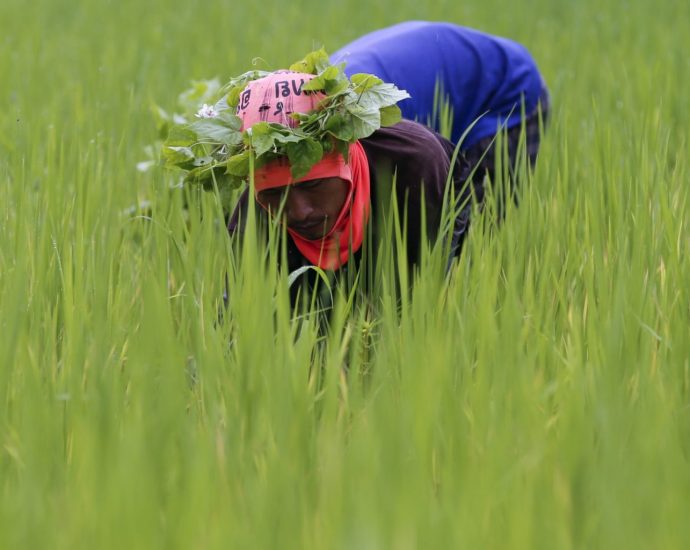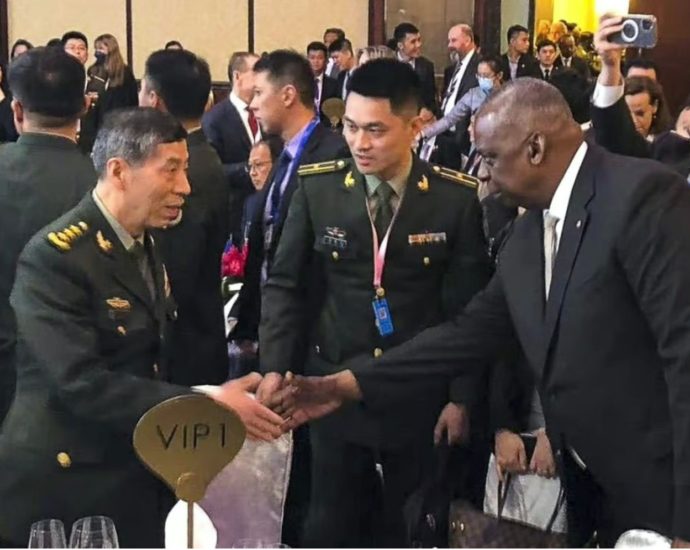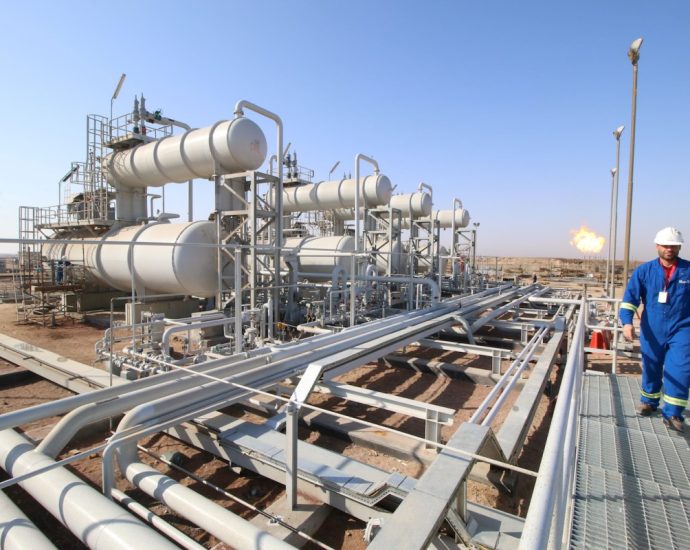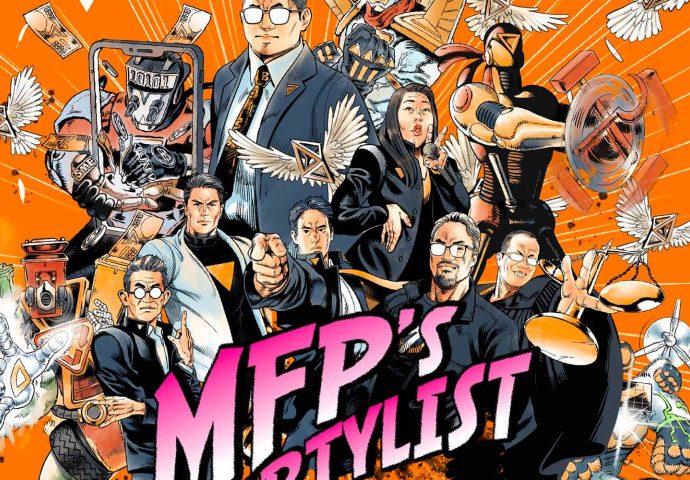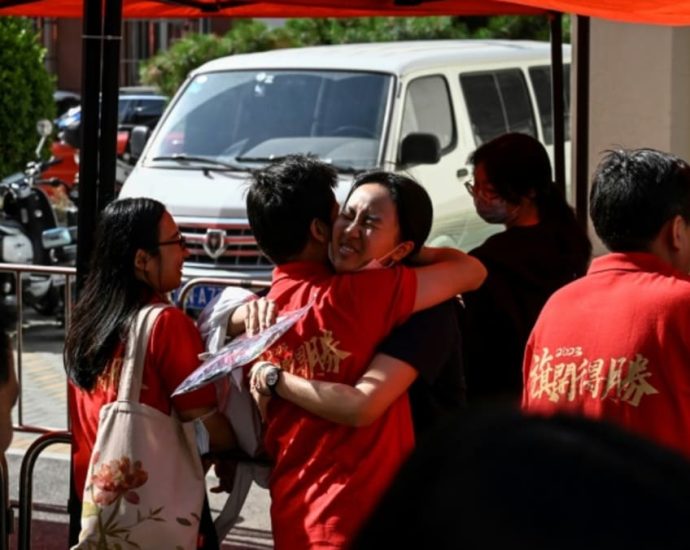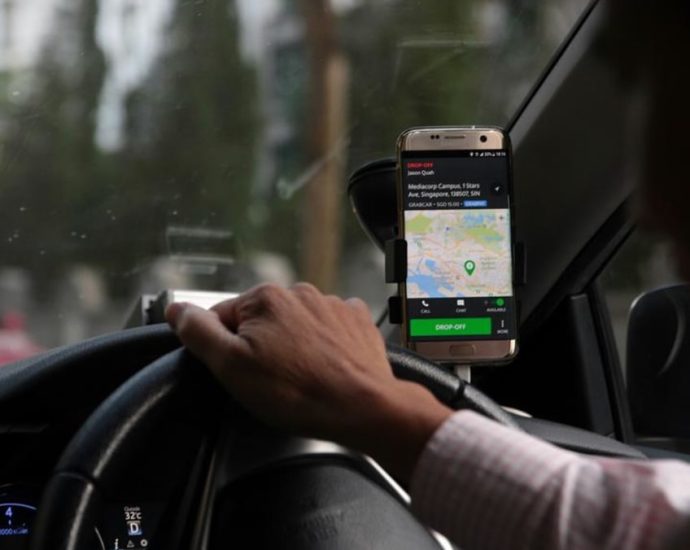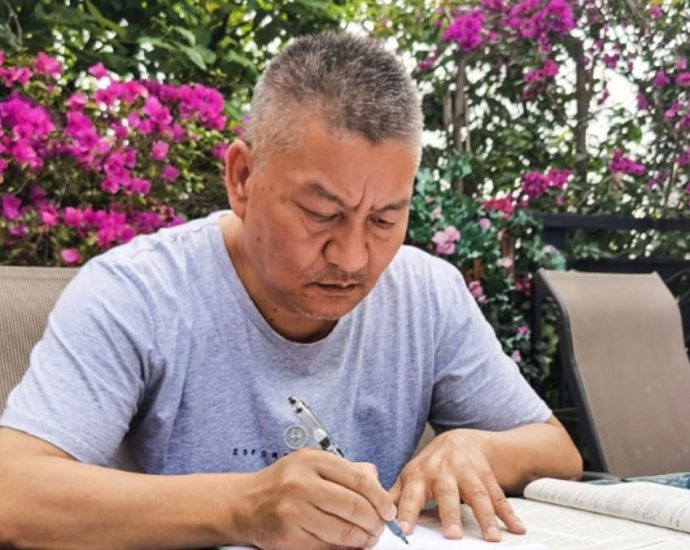China’s exports tumble in May as global demand falters
Chinese stocks trimmed gains and the Australian dollar, a commodity currency that is highly sensitive to swings in Chinese demand, fell after the trade data. “The weak exports confirm that China needs to rely on domestic demand as global economy slows,” said Zhiwei Zhang, chief economist at Pinpoint Asset Management.Continue Reading
Singapore Turf Club closure: âItâs not the endâ, says one riding school that moved there three months ago

Maintaining a horse also does not come cheap, costing around S$4,000 each month.
Bukit Timah Saddle Club has 80 horses, while more than 30 others are privately owned in its liveries.
It is also planning to take in five former racing horses from the Singapore Turf Club, which will export its 700 horses to countries such as Malaysia before it shuts.
Meanwhile, Gallop Stable, which takes in retired horses, said it is willing to house the remaining ones that do not get exported.
But the company, which runs two stables in Bukit Timah and Pasir Ris, said it takes several months to rehabilitate a horse.
Malaysia wins appeal against partial award in US$15 billion claim by sultan’s heirs
KUALA LUMPUR: A Paris court has upheld the Malaysian government’s challenge against enforcing a partial award to the heirs of a former sultan who won US$15 billion in an arbitration over a colonial-era land deal, Malaysia said late on Tuesday (Jun 7). The win for Malaysia implies the final awardContinue Reading
Next Thai government should fast-track the China train
A high-speed rail link between China and Southeast Asia is the key to common prosperity in southern China as well as Thailand. It is also of critical importance for China’s food security.
This is a critical task for the next Thai government. China’s government coined the term “common prosperity” to mean narrowing the income gap between China’s prosperous cities and its rural provinces. High-speed communications give rural communities the chance to prosper by gaining access to the world market.
Agriculture contributes just 6% to Thailand’s GDP but employs a third of its workforce. Thailand cannot emulate the Chinese development model, emptying the countryside to feed urban industry, without harm to our culture and social structure.
Our path to prosperity requires an increase in the value-added of agriculture that raises rural incomes. Our comparative advantages include the world’s best fresh produce. To our north is the world’s largest market for high-quality fruits and vegetables. What is missing is the ability to deliver high-value-added agriculture products in time.
China’s requirement for food security creates a strong common interest with Thailand and the rest of Southeast Asia. Western strategists have raised the prospect of a naval blockade against China’s food imports in the event of a conflict over Taiwan.
Yet the world’s most productive agricultural land lies to China’s immediate south. It is much cheaper to build railroads than it is to build navies. China cannot depend on sea routes because it cannot match the naval power of the West.

From China’s standpoint, a high-speed rail link to Thailand is the most cost-effective way to improve food security, with an estimated cost of US$12 billion (434 billion baht). The cost of the rail line from Tacheng in China’s Xinjiang province to Karamay in Kazakhstan, by contrast, was US $840 billion. China invested $70 billion in Central Asia as of 2022.
China’s direct investment in ASEAN countries as of 2021 totaled just $14 billion. Yet China’s exports to ASEAN in April 2023 reached $35 billion, compared to $15 billion in exports to Central Asia (including Turkey and Iran).

Leaving aside geopolitical motives for China’s lopsided investment in the New Silk Road countries of Central Asia, common-sense economic considerations make clear that China has a deep interest in Southeast Asian infrastructure.
With the completion of the nearly 1,000-kilometer, high-speed rail link between the southern Chinese city of Kunming and Vientiane, Laos, the additional 700 kilometers to Bangkok present less of a challenge.
China now exports almost as much to ASEAN as it does to the European Union, yet its infrastructure spending on the overland connection to Europe is an order of magnitude greater than its investment in Southeast Asia. That discrepancy is the result of political missteps on all sides.
The new Thai government cannot afford to perpetuate these errors.

At present, China depends extensively on food imports from Australia, requiring at least six days at sea between Freemantle and Singapore, and additional weeks at sea to ship products from Singapore to Chinese ports. Shipment of fresh produce is out of the question.
Yet a high-speed Kunming-Bangkok rail route could bring fresh Thai agricultural products to southern China in about 17 hours. And a high-speed rail link extending from southern China to Singapore would reduce the journey from weeks to days. Malaysia could also ship to China via rail instead of sea in a fraction of the time. Thailand would earn fees from rail service and warehousing.
Not only food security but quality of life will improve for the Chinese as a result of a high-speed rail connection. Common prosperity has been Beijing’s watchword, a laudable goal, but difficult to achieve in China’s hinterland. High-quality, pollutant-free Thai produce would improve the living standard of southwestern China as well as sustain the prosperity of rural Thailand.
Thailand must embrace the Fourth Industrial Revolution—the marriage of artificial intelligence, high-speed data transmission and Cloud computing with the real economy. We have a strong industrial economy, but we won’t compete with Sweden or even China in building industrial robots.
But Fourth Industrial Revolution technology applies to agriculture as much as it does to manufacturing. It improves quality control in food packaging, shortens warehouse and delivery times, and provides instantaneous information to farmers on product demand.
Most of all, the spread of broadband to rural areas gives communities around the world an opportunity to trade directly with each other. Farming communities who worked at the margin of the world market without access to information now can find customers or suppliers worldwide.

Faster transport and high-tech logistics make it possible for a town in Yunnan province to order its vegetables directly from a town in northern Thailand. Entrepreneurs who had no access to market information or credit will have the opportunity to sell directly to the world, bypassing the conventional structure of international trade.
The new communications and logistics will allow the talented few to become entrepreneurs and mobilize resources that now remain fallow.
The combination of new information technology and high-speed rail transport can unleash a wave of prosperity and rising incomes in rural Thailand. This is an opportunity too big to miss, and it should be a top priority of the new Thai government.
Pansak Vinyaratn is a former chief advisor to several prime ministers of Thailand
Rising risk of US-China ânear missesâ around Taiwan
An encounter in which a Chinese naval ship cut across the path of a US destroyer in the Taiwan Strait on June 3, 2023, has both Beijing and Washington pointing fingers at each other.
It was the second near miss in the space of just a few weeks; in late May a Chinese plane crossed in front of an American surveillance aircraft above the South China Sea.
Meredith Oyen, an expert on China-US relations at the University of Maryland, Baltimore County, helps explain the context of the recent encounters and how they fit within growing tensions between the two countries.
What do we know about the Taiwan Strait incident?
It came as the US and Canada were conducting a joint transit of the Taiwan Strait – a body of water that separates the island of Taiwan from mainland China. Washington does these transits fairly regularly, but not usually with another country.
As the American destroyer USS Chung-Hoon and Canadian frigate HMCS Montreal traveled up the channel, a Chinese warship passed and veered across the US vessel’s path at a pretty close range, according to US Indo-Pacific Command. As a result, the USS Chung-Hoon had to reduce its speed to avoid a collision.
The US has characterized the incident as an “unsafe” maneuver on behalf of the Chinese and protested that it took place in international waters.
The perspective from Beijing is that the US and Canada were “deliberately provoking risk” by sailing a warship through Chinese waters.
Who is right? Did it take place in international or Chinese waters?
The United Nations Convention on the Law of the Sea stipulates that a country’s “territorial waters” extend 12 nautical miles off its coast – anything above or on the sea in that zone is considered part of the country’s territory.
After that, there is a further 12-mile “contiguous zone,” over which a coastal state has rights to prevent infringement of the country’s “customs, fiscal, immigration or sanitary” laws, according to the UN treaty.

Complicating matters, Beijing – a signatory to the Convention on the Law of the Sea, unlike the US – claims the island of Taiwan as part of China.
Under the UN convention’s stipulations, this would also mean Beijing can claim the 12 miles of territorial waters off Taiwan’s coast, as well as a 12-mile contiguous zone.
But even at its narrowest point, the Taiwan Strait is around 86 miles wide. So even accepting Beijing’s territorial claim, there would, under UN law, be a channel that falls outside its territory.
Nonetheless, Beijing claims sovereignty of the entirety of the waters between Taiwan and China under its exclusive economic zone.
Despite not signing the UN Convention on the Law of the Sea (UNCLOS), the US abides by the 12-mile standard and views a large chunk of the strait as international waters.
How common are these ‘near misses’?
The United States has regularly sailed vessels through the Taiwan Strait for decades. At times of tension – notably during the Korean War and Taiwan Straits crises of 1954-55, 1958 and 1962 – the US has deployed destroyers in the channel as a deliberate show of military strength and support for Taiwan.
This continued after the US normalized relations with China in 1978 until today, with few incidents that caused the level of tit-for-tat recriminations such as in the latest case. But there have been “near misses” in the sky, noticeably the recent airplane-to-airplane encounter that preceded this incident.
What we have increasingly seen, though, is Chinese officials protest these Taiwan Strait transits by the US. And the number of protests by China has increased in recent years, as tension over Taiwan has increased.
How does this incident fit growing maritime tension in the region?
The past few years have seen a deterioration in US-China relations. There have been no direct, high-level military talks between the two countries since 2019. Meanwhile, relations have further soured on other topics, such as the ongoing trade war, the issue of Taiwan and allegations relating to the spread of Covid-19.
At times of better relations between Beijing and Washington, military transits such as the one in the Taiwan Strait might have gone largely unremarked upon. But amid such tensions, any incident is elevated to the level of uniquely bad provocation.
The broader context is that the US regularly holds military drills and “freedom of navigation” operations in the South China Sea. These activities are used by the US Department of Defense to demonstrate that the US has a right to sail in waters it views as international, even if they are claimed by nation states.
The concern is that with tensions as they are – and with no official direct line of dialogue – a near miss during such a drill, or, worse still, an actual collision, could escalate beyond control, leading to military conflict.
Any significance over why this happened now?
The near miss came at a curious time – while top diplomats and defense chiefs from both the US and China were attending the Shangri-La Dialogue in Singapore.

At that security summit, US Defense Secretary Lloyd Austin shook the hand of his Chinese counterpart, Li Shangfu. But they didn’t hold a side meeting – as some observers had hoped.
Austin also underscored the importance of the Taiwan Strait to Washington: “The whole world has a stake in maintaining peace and stability in the Taiwan Strait. The security of commercial shipping lanes and global supply chains depends on it. And so does freedom of navigation worldwide. Make no mistake: conflict in the Taiwan Strait would be devastating.”
Washington has suggested that it wants to resume official talks with Beijing. Incidents such as that in the Taiwan Strait underscore the potential need for such discussions, if only to avoid encounters escalating into something more serious.
Meredith Oyen, Associate Professor of History and Asian Studies, University of Maryland, Baltimore County
This article is republished from The Conversation under a Creative Commons license. Read the original article.
World economy changing â Americans know, but their leaders donât

The year 2020 marked parity between the total GDP of the Group of Seven (the US plus allies) and the total GDP of the BRICS group (China plus allies). Since then, the BRICS economies grew faster than the G7 economies. Now a third of total world output comes from the BRICS countries while the G7 accounts for below 30%.
Beyond the obvious symbolism, this difference entails real political, cultural, and economic consequences. Bringing Ukrainian President Volodymyr Zelensky to Hiroshima to address the G7 recently failed to distract the group’s attention from the huge global issue: what is growing in the world economy versus what is declining.
The evident failure of the economic sanctions war against Russia offers yet more evidence of the relative strength of the BRICS alliance. That alliance now can and does offer nations alternatives to accommodating the demands and pressures of the once-hegemonic G7.
The latter’s efforts to isolate Russia seem to have boomeranged and exposed instead the relative isolation of the G7. Even French President Emmanuel Macron wondered out loud whether Paris might be betting on the wrong horse in that G7-vs-BRICS economic race just under the surface of the Ukraine war.
Perhaps earlier, less-developed precursors of that race influenced failed US land wars in Asia, from Korea through Vietnam to Afghanistan and Iraq.
China increasingly competes openly with the United States and its international lending allies (the International Monetary Fund and the World Bank) in development loans to the Global South.
The G7 attack the Chinese, charging them with replicating the predatory lending for which G7 colonialism was and G7 neocolonialism is justly infamous. The attacks have had little effect given the needs for such borrowing that drive the welcome offered to China’s loan policies.
Time will tell whether shifting economic collaboration from the G7 to China leaves centuries of predatory lending behind. Meanwhile, the political and cultural changes accompanying China’s global economic activities are already evident: for example, African nations’ neutrality toward the Ukraine-Russia war despite G7 pressures.
Dollar at risk
De-dollarization represents yet another dimension of the now-rapid realignments in the world economy. Since 2000, the proportion of central banks’ currency reserves held in US dollars has fallen by half. That decline continues.
Every week brings news of countries cutting trade and investment payments in US dollars in favor of payments in their own currencies or other currencies than the dollar. Saudi Arabia is closing down the petrodollar system that crucially supported the US dollar as the pre-eminent global currency.
Reduced global reliance on the greenback also reduces dollars available to the US government to finance its borrowings. The long-term effects of that, especially as the US government runs immense budget deficits, will likely be significant.
Peace promotion
China recently brokered the rapprochement between enemies Iran and Saudi Arabia. Pretending that such peace-making is insignificant represents purely wishful thinking. China can and will likely continue to make peace, for two key reasons.
First, it has resources (loans, trade deals, investments) to commit to sweeten accommodations between adversaries. Second, China’s stunning growth over the last three decades was accomplished under and by means of a global regime mostly at peace. Wars then were mostly confined to specific, very poor Asian locations. Those wars minimally disrupted the world trade and capital flows that enriched China.
Neoliberal globalization benefited China disproportionally. So China and BRICS countries have replaced the United States as the champions of continuing a broadly defined global regime of free trade and capital movements.
Defusing conflicts, especially in the contentious Middle East, enables China to promote the peaceful world economy in which it prospered. In contrast, the economic nationalism (trade wars, tariff policies, targeted sanctions, etc) pursued by Donald Trump and Joe Biden has struck China as a threat and a danger. In reaction, China has been able to mobilize many other nations to resist and oppose US and G7 policies in various global forums.
Hybrid model
The source of China’s remarkable economic growth, and the key to BRICS countries’ now successful challenge to the G7’s global economic dominance, has been its hybrid economic model.
China broke from the Soviet model by not organizing industry as primarily state-owned-and-operated enterprises. It broke from the US model by not organizing industries as privately owned and operated enterprises. Instead, it organized a hybrid combining both state and private enterprises under the political supervision and ultimate control of the Communist Party of China.
This hybrid macroeconomic structure enabled China’s economic growth to outperform both the USSR and the United States. Both China’s private and state enterprises organize their workplaces – their production systems’ micro-level – into the employer-employee structures exemplified by both Soviet public and US private enterprises. China did not break from those microeconomic structures.
If we define capitalism precisely as that particular microeconomic structure (employer-employee, wage labor, etc), we can differentiate it from the master-slave or lord-serf microeconomic structures of slave and feudal workplaces. Following that definition, what China constructed is a hybrid state-plus-private capitalism run by a communist party.
It is a rather original and particular class structure designated by the nation’s self-description as “socialism with Chinese characteristics.” That class structure proved its superiority to both the USSR and the G7 in terms of its achieved rates of economic growth and independent technological development. China has become the first systemic and global competitor that the United States has had to face in the last century.
Lenin once referred to the early USSR as a “state capitalism” challenged by the task of making a further transition to post-capitalist socialism. President Xi Jinping could refer to China today as a hybrid state-plus-private capitalism similarly challenged by the task of navigating its way forward to a genuinely post-capitalist socialism.
That would involve and require a transition from the employer-employee workplace structure to the democratic alternative microeconomic structure: a workplace cooperative community or a workers’ self-directed enterprise.
The USSR never made that transition. Two key questions follow for China: Can it? And will it?
The United States also faces two key questions. First, how much longer will most US leaders persist in denying its economic and global declines, acting as if the US position had not changed since the 1970s and 1980s? Second, how can such leaders’ behavior be explained when large American majorities acknowledge those declines as ongoing long-term trends?
A Pew Research Center random poll taken among Americans between March 27 and April 2 asked what they expected the situation of the United States to be in 2050 compared with today.
Some 66% expect the US economy will be weaker. Seventy-one percent expect the United States will be less important in the world. Seventy-seven percent expect the United States will be more politically divided. Eighty-one percent expect the gap between rich and poor will grow.
The American people clearly sense what their leaders desperately deny. That difference haunts US politics.
This article was produced by Economy for All, a project of the Independent Media Institute, which provided it to Asia Times.
Move Forward’s use of hammer and sickle challenged in complaint
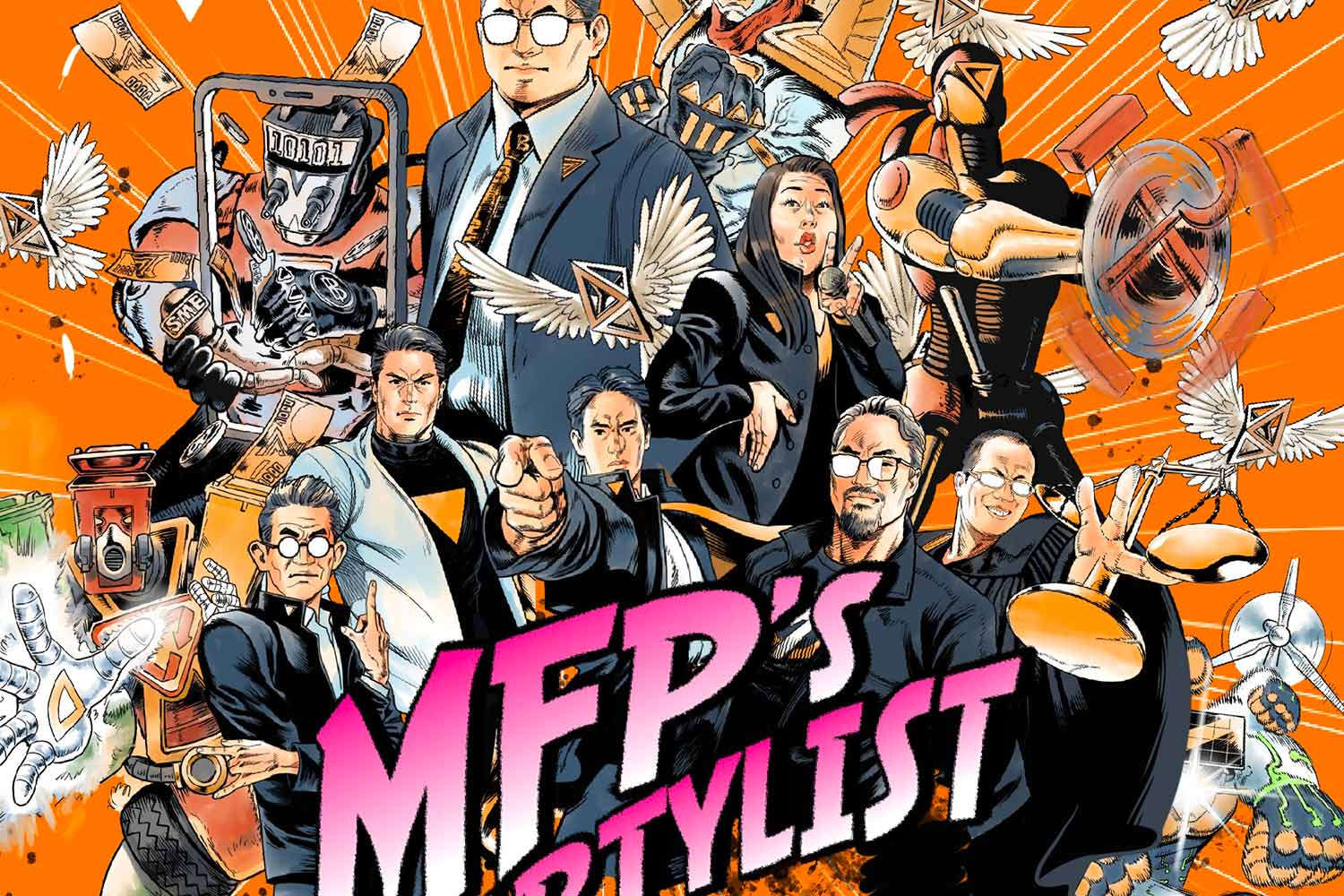
The Move Forward Party said the Election Commission has asked why it included a hammer and sickle in its campaign cartoon, after a complaint that it suggested opposition to the constitutional monarchy.
The MFP said on its Facebook account on Tuesday night that the EC posed the question in a recent letter to the party. The question concerned a cartoon the party posted on April 18 to introduce its list-MP candidates from the labour sector, ahead of the May 14 general election.
The EC letter said a complainant asked it to investigate if the party was against constitutional monarchy, which would be a violation of the constitution. The hammer and sickle is used to represent industrial and agricultural workers, and is also used by the communist movement.
The commission asked why the MFP used the hammer and sickle, and what it meant in the election camaign cartoon.
The MFP said on Tuesday night that the hammer and sickle in the campaign cartoon was intended to show that some of its list-MP candidates were from the labour sector.
MFP, which won the most seats in the general election, also wrote that it was facing “lawfare” against its bid to form a new government.
Millions of Chinese students sit gruelling college entrance exams
“I STRUGGLED” Testing high school students on their Chinese, English, mathematics and other science or humanities subjects of their choice, the exams are critical to landing coveted spots at China’s top universities. Many parents shell out hundreds of dollars a month on cram schools or hire graduate students to sitContinue Reading
Grab driver fined for operating as taxi after ferrying street-hail passengers

SINGAPORE: Despite the fact that she was licensed only to operate as a private-hire driver and not as a taxi driver, a woman picked up two passengers who flagged down her vehicle.
The vehicle was later involved in an accident, and the case came to court with the judge meting out a fine of S$2,300 (US$1,706) and a driving ban of 12 months.
These were for two charges that the Grab driver claimed trial to but was convicted of: For using a chauffeured private-hire car without a valid licence authorising her to use it as a taxi, and for using a private-hire car for gain or reward as a taxi public service vehicle when there was no related insurance policy in force.
According to a judgment published on Wednesday (Jun 7), Nandha Sharm Nair was driving her private-hire car on the night of Jan 27, 2022.
Two men were trying to flag down a taxi around MacPherson Road, and Nair, 45, stopped her car in front of them.
She agreed to ferry the men to Beatty Lane, which was about 15 minutes away, even though neither of the men had made a booking.
When they got to Beatty Lane, one of the men offered a S$50 note to Nair, asking for change. After negotiating, Nair collected S$25 from him.
While Nair was negotiating the price with one of the men, the other passenger alighted first and retrieved his vehicle. He then accidentally hit Nair’s car with his vehicle.
Court documents did not reveal how Nair’s offences were uncovered, but they did state that the passenger who caused the accident was investigated by the traffic police shortly after.
He was not ultimately convicted of any drink driving offence, despite Nair’s allegation that both her passengers could have been drunk at the time.
According to the Road Traffic Act, a vehicle cannot be used as a public service vehicle unless there is a valid licence authorising such use.
The main distinction between a private-hire car and a taxi is that a taxi can “ply for hire” while a private-hire car cannot, according to the judgment.
According to past case law, a vehicle moving along the roads looking for fares and stopping whenever it is hailed would clearly be plying for hire, said District Judge Soh Tze Bian.
“On the facts of this case, another useful consideration is to enquire whether there was a booking made before the trip, whether through a ride-hailing app or equivalent booking platform,” he said.
“If such a prior booking existed before the driver had any interaction with the prospective passenger, the vehicle would not be said to be plying for hire.”
In her defence, Nair said she had a booking that ended up being cancelled at the location where the two men had been standing by the side of the road.
She said she agreed to drive them “purely on compassionate grounds”, as the men said they had been waiting for almost an hour without a ride.
She asserted that there was no discussion of fees or monetary benefits when the men boarded her vehicle or during the journey, therefore she was not using her vehicle as a public service vehicle.
ACCUSED NOT A CREDIBLE WITNESS: JUDGE
Judge Soh agreed with the Land Transport Authority prosecutors that Nair was not a credible witness. He found her evidence “self-serving” and was seeking to exculpate herself from any liability for the offences.
He found that Nair had not ferried the two men out of compassion. He said Nair had stopped her vehicle in the first place to check on her cancelled booking, which suggests she was likely looking for passengers.
“She had obviously decided to pick up (the two men) as a replacement for her previous cancelled booking,” said Judge Soh.
He said it was clear that Nair had used the vehicle to ply for hire, without possessing a taxi public service vehicle licence.
“Taxis are regulated differently from private-hire cars and are subject to stricter standards. For instance, taxis undergo more frequent inspections and taxi drivers undergo more rigorous training,” said the judge.
“As such, a private-hire car should not be performing (street-hail) functions that only taxis are permitted to carry out. This is in the interest of safety, for both the driver and the passengers.”
He said Nair’s only mitigating factor was that she had no prior convictions.
For using a private-hire vehicle as a taxi without a valid licence, she could have been jailed for up to six months, fined up to S$3,000, or both.
For using a private-hire car for gain or reward as a taxi public service vehicle, she could have been jailed for up to three months, fined up to S$1,000 and banned from driving for 12 months.
Self-made millionaire sits China’s university exams for 27th time
BEIJING: Among the millions of fresh-faced high schoolers sitting in China’s dreaded “gaokao” college entrance exam on Wednesday (Jun 7), Liang Shi sticks out like a sore thumb – a grey-haired, self-made millionaire stubbornly taking the test for the 27th time. Liang, 56, is no fool. He worked his wayContinue Reading

